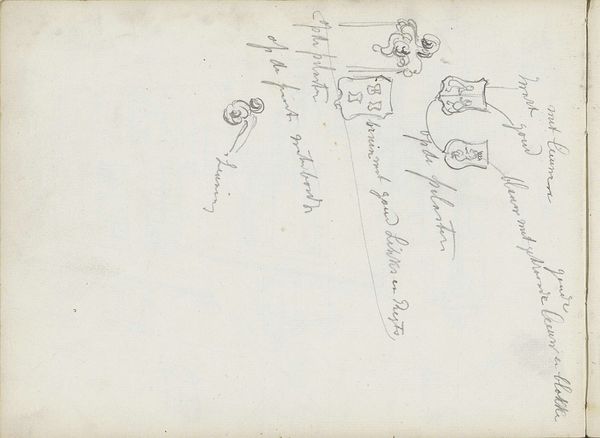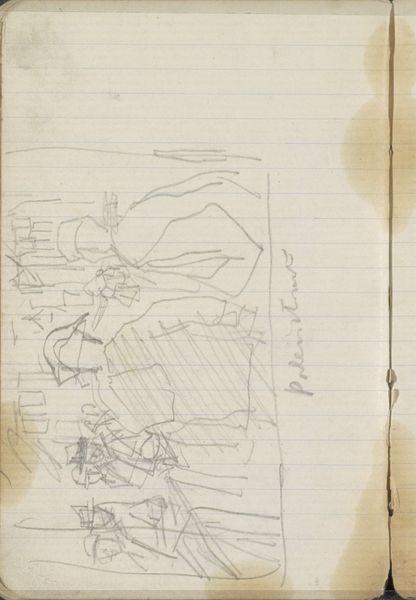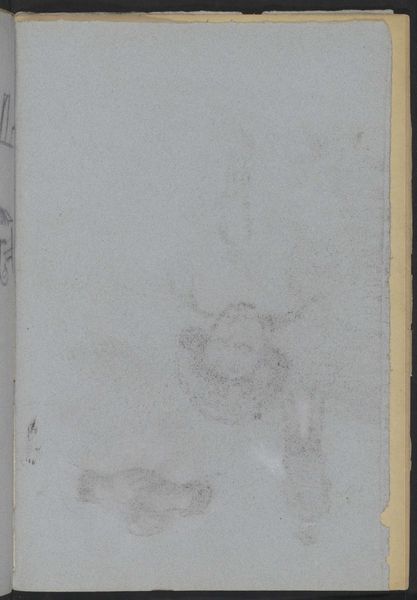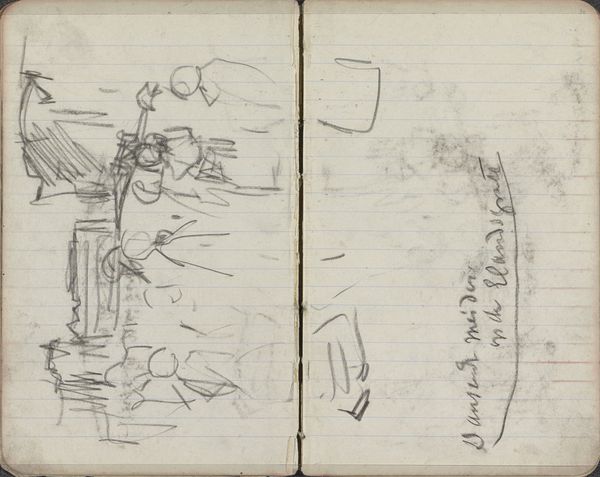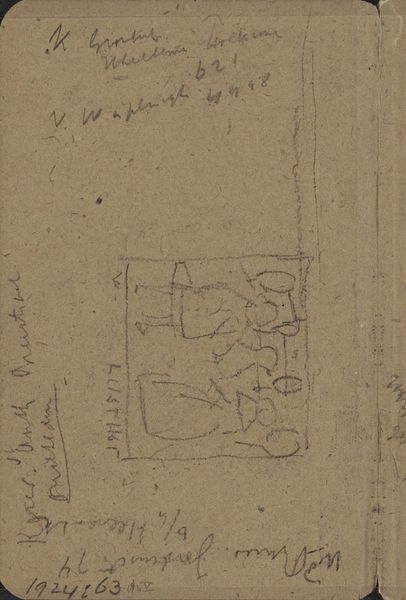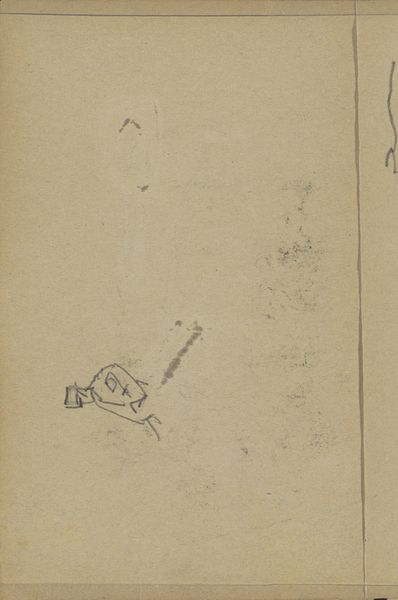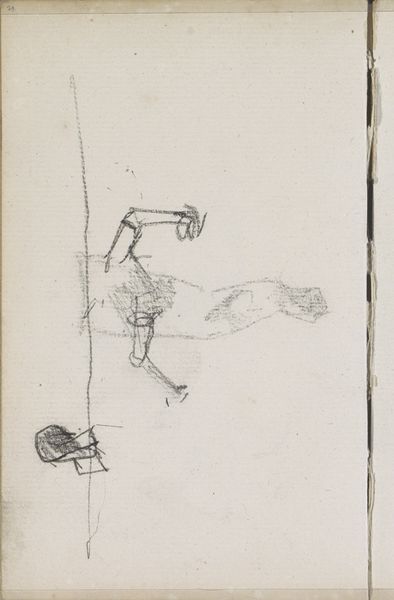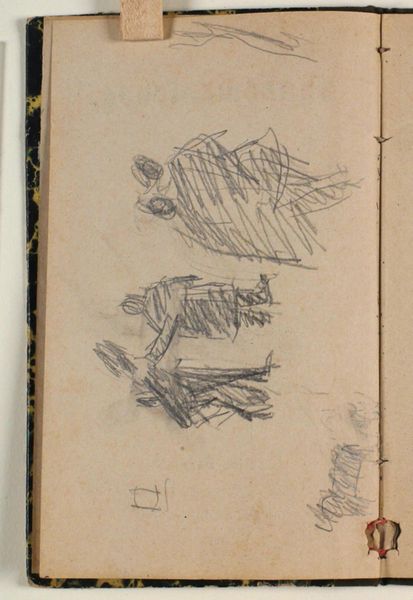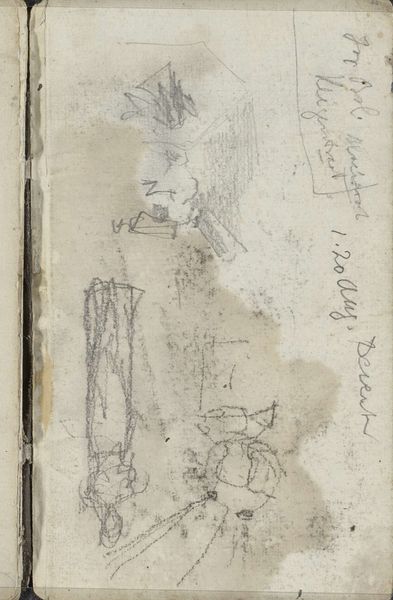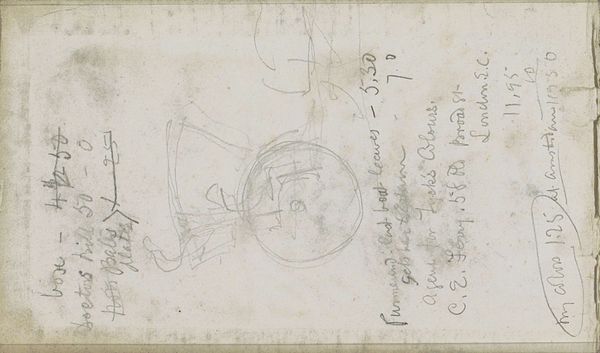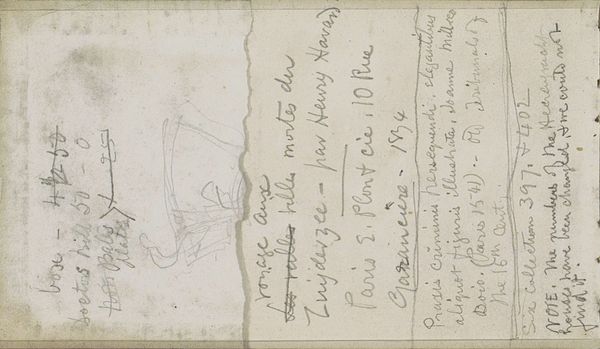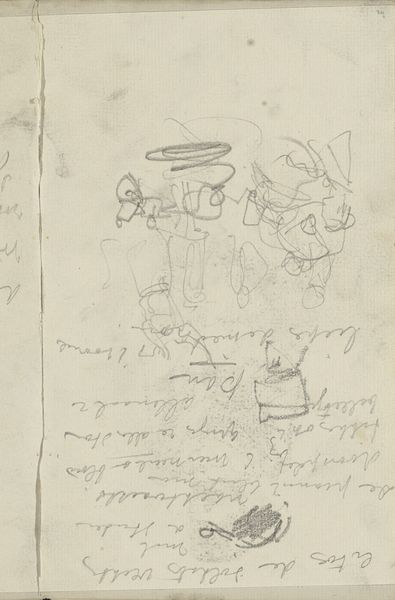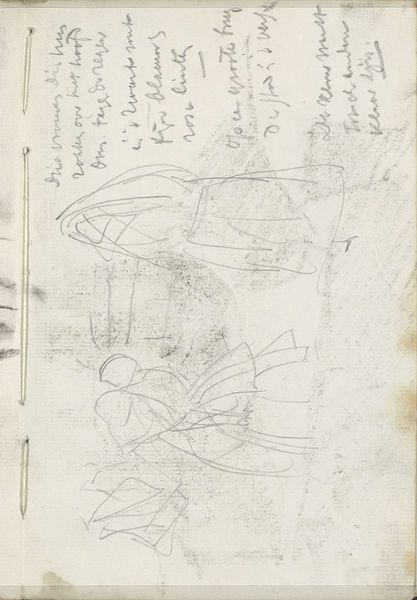
drawing, paper, graphite
#
portrait
#
drawing
#
impressionism
#
paper
#
graphite
#
realism
Copyright: Rijks Museum: Open Domain
Curator: Let’s talk about George Hendrik Breitner’s “Hoofden,” a drawing done between 1881 and 1883. It's currently held in the Rijksmuseum. What strikes you first? Editor: It feels ephemeral, a collection of sketches dashed down quickly, almost like a fleeting thought caught on paper. The graphite is so soft, the lines tentative. It speaks of process more than a finished product. Curator: Absolutely. Breitner was deeply invested in capturing the immediacy of life around him. Notice the subjects - heads, yes, but also inscriptions, perhaps notes or names scrawled alongside. It reads as a raw document, more diary than deliberate artwork. Editor: And there’s such honesty in the materials: simple paper, readily available graphite. It highlights the working class from whence its supplies may come. These were ordinary things made into art through observation and a skilled hand, no highfalutin materials here. No one's pretending this is precious. Curator: It brings a stark realism, which Breitner fully embraced. The roughness you mentioned lends the piece a sense of unpretentiousness, almost gritty, refusing the aesthetic standards expected. Editor: Gritty precisely describes its aesthetic; I like it! We aren’t talking idealized portraits, all polished surfaces. These are working sketches exploring human form and maybe their characters in its roughest of renderings. It reflects on those doing art more accessibly than fine finished works might reveal alone; this work shows honest work, right there. Curator: That contrast to high art is a pivotal aspect of the Impressionist movement of that time which really emphasized capturing real life. Editor: It truly humanizes both the subject and the artist, revealing them. It feels incredibly... present. Curator: Yes, and that makes this humble sketch as important as any polished oil painting of that era, perhaps even more. I like leaving things unpolished these days—don't you think it sometimes renders the emotion of the initial artistic process better than its manicured and lacquered sibling work might capture? Editor: Most absolutely, sometimes process renders a clearer, deeper picture than polished perfection is meant to veil. Thank you!
Comments
No comments
Be the first to comment and join the conversation on the ultimate creative platform.
